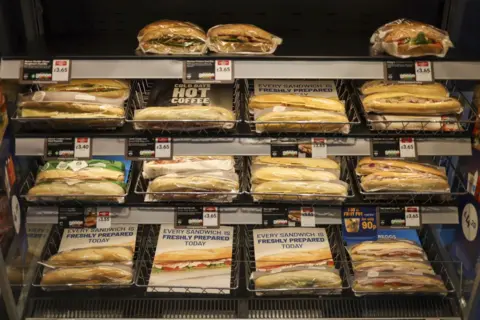### Greggs’ Responses to Rising Shoplifting Incidents
In a bold move to combat the growing problem of shoplifting, Greggs, the well-known High Street bakery chain, has announced that it will be relocating its self-serve food and beverages behind the counter in select locations. This initiative is part of a broader strategy to address an alarming rise in thefts, particularly in areas identified as hotspots for anti-social behavior.
The test phase of this measure is being conducted at a few selected branches, including locations in Whitechapel, Peckham, and Ilford in east London. Greggs aims to mitigate the risks associated with theft in stores that are experiencing higher levels of such incidents. While this shift is not anticipated to roll out across all of Greggs’ 2,600 outlets in the UK, the company may consider implementing it in other sites reporting significant theft issues.
### The Impact of Rising Offences
According to data from the Office for National Statistics, the number of shoplifting offences recorded by police surged by 20% in 2024, totaling over 516,000 incidents. However, reports from the British Retail Consortium (BRC) indicate that the true scale of the issue is even greater, with retailers documenting over 20.4 million incidents of theft. This represents a staggering increase of 3.7 million compared to the year prior.
Greggs emphasized that the safety of its customers and employees remains paramount, urging that the shift behind the counter would not prevent patrons from accessing the full range of products available at their bakeries. The company underscored that in response to escalating concerns, it is crucial to find new strategies to ensure a secure shopping environment.
### Organised Crime and Changing Criminal Demographics
Retailers have increasingly voiced concerns about being targeted by organized stealing operations. Reports suggest that sophisticated gangs are employing tactics such as using Bluetooth headsets to coordinate thefts while creating distractions, allowing members to escape with stolen goods. Andy Higginson, chair of JD Sports and BRC, highlighted an unsettling trend — a segment of society is increasingly viewing shoplifting as a normalized practice.
Higginson described the phenomenon as a “way of life” for some individuals, suggesting that societal perceptions of theft are shifting. There is an urgent need to counter this mentality, as it poses significant challenges for retailers and undermines the trust within communities.
### Diverse Experiences Amid Rising Shoplifting
The rising tide of shoplifting incidents has also brought to light various demographics involved in these crimes. Beyond organized gangs, anecdotal evidence suggests that some shoppers, including elderly individuals, have resorted to stealing necessities due to financial struggles exacerbated by the pandemic and rising living costs. John Nussbaum, a director at Kingdom Security, reported a notable increase in older shoppers being apprehended for minor thefts, such as coffee or basic grocery items.
These developments paint a complex picture of theft in today’s retail landscape, as it encompasses both organized crime and desperate individuals grappling with the ongoing cost-of-living crisis. Increasingly, mothers have been caught shoplifting with children in tow, underscoring an urgent need for community support and intervention strategies.
### Conclusion: A Complex Challenge for Retailers
The steps taken by Greggs to move products behind the counter reflects an immediate reaction to a troubling increase in retail theft, particularly as it pertains to the bakery sector. However, this development illuminates a broader issue facing retailers in the UK: the evolving nature of shoplifting fueled by economic pressures, societal attitudes towards stealing, and a heightened necessity for improved security measures. Going forward, striking a balance between ensuring safety and addressing the root causes of theft remains imperative for the retail sector as a whole.



